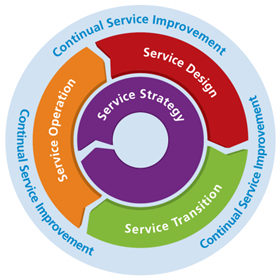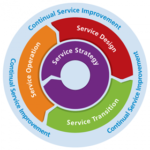7 Steps to Continual Service Improvement (CSI) Success
No matter the size or maturity of your service desk, every service desk manager questions how to implement Continual Service Improvement (CSI) and make it meaningful. Implementing CSI successfully can be hard enough; implementing it according to Pink Elephant – certification, best-practice standards is a demanding and often overwhelming process. Thankfully, Dave Jones, Principal ITSM Consultant at Pink Elephant, recently discussed CSI in a webinar and provided a comprehensive, step-by-step guide.

7 Steps to Continual Service Improvement (CSI) Success
While breaking down CSI into a multi-step process is useful for managers, it doesn’t change the “continual” aspect of CSI. “The whole point about continual service improvement is that it’s continual,” Dave Jones confirmed. Recognising the cyclical nature of CSI is essential for any organisation that’s trying to implement CSI. Accordingly, one of Dave’s key messages is that “Everyone has responsibility for continual improvement. This means CSI has to be treated like any other practice and any other process within business.”
Let’s review the seven steps that comprise Dave and Pink Elephant’s approach to CSI:
- Define what you can measure (and identify your strategy). Dave explained that this should be based on the business and IT vision—the strategy, goals and objectives. The questions you should be asking: What business outcome am I trying to achieve? What are the existing and future business requirements? This step is about positioning yourself for the future and setting the stage for the entire CSI process. It isn’t just about saying what you need to measure but why you need to measure it (that’s the strategy).
- Define what you will measure. This process should be based on what your existing tools and resource capabilities are. Ask yourself, “What are our current processes and how do we want to measure those?” Dave advised to “Make sure all of the reports that [you] generate and all of the time [you] consume are actually being used in a meaningful way.”
- Gather the data. You’ve already identified what you’re going to measure and how. Now measure it and organise it. Take the data, Dave says, and “Bring it all into one place so that you can do something constructive with it.” In this step you should also “implement new monitoring procedures—this could be one of the first CSI initiatives.”
- Process the data. After you’ve gathered your data, address your findings. This step is all about “taking the data and turning it into information that makes sense and provides the ability for analysis.”
- Analyse the information and data. Identify the trends you find in your data—both negative and positive. It’s essential that you document and report on these trends. “One of the most challenging mechanisms you will have is to measure your achievement against perception,” Dave says. Compare your CSI findings against your overall business strategy—your policies, standards, legal requirements, business imperatives and so forth. There are four main activities that fall within this step: (1) Service Strategy analyses the results associated with implemented strategies, policies and standards. (2) Service Design analyses the current results as well as trends over a period of time and helps to identify opportunities to improve the design and improve the delivery of the end-to-end lifecycle. (3) Service Transition analyses the results of the service evaluations that include release and deployment activities. (4) Service Operation analyses the current results of design and project activities.
- Present and use the information. Often, this is one of the most overlooked aspects. Dave’s main point here is to “Know your audience! Your CEO or CFO potentially don’t need technical detail. What they do need is an overall view on what you’ve achieved, which services operated, which services didn’t operate, which users are unhappy.” Present your information in a useful and understandable manner—whether you’re presenting to the CIO or the CFO. It’s also important to conduct QA on your reports—make them accurate and clean.
- Implement improvement. Simple and straightforward, Dave recommends treating your “improvement initiatives as formal programmes and projects.” Take it seriously and involve your entire team. For Dave, CSI implementation is a matter of turning “knowledge into wisdom”—translating technical knowledge into practical knowledge. That’s how organisations successfully improve their processes.
While there’s no guaranteed formula for CSI success, Dave and Pink Elephant’s seven-step approach offers a measured and logical method for those looking to implement CSI and once you’ve gone through all the steps, go right back to the beginning and do it all over again. After all, it’s continuous.
Article by Jamison Pfeifer, Cherwell, based on a webinar presented by Dave Jones, Pink Elephant EMEA.
